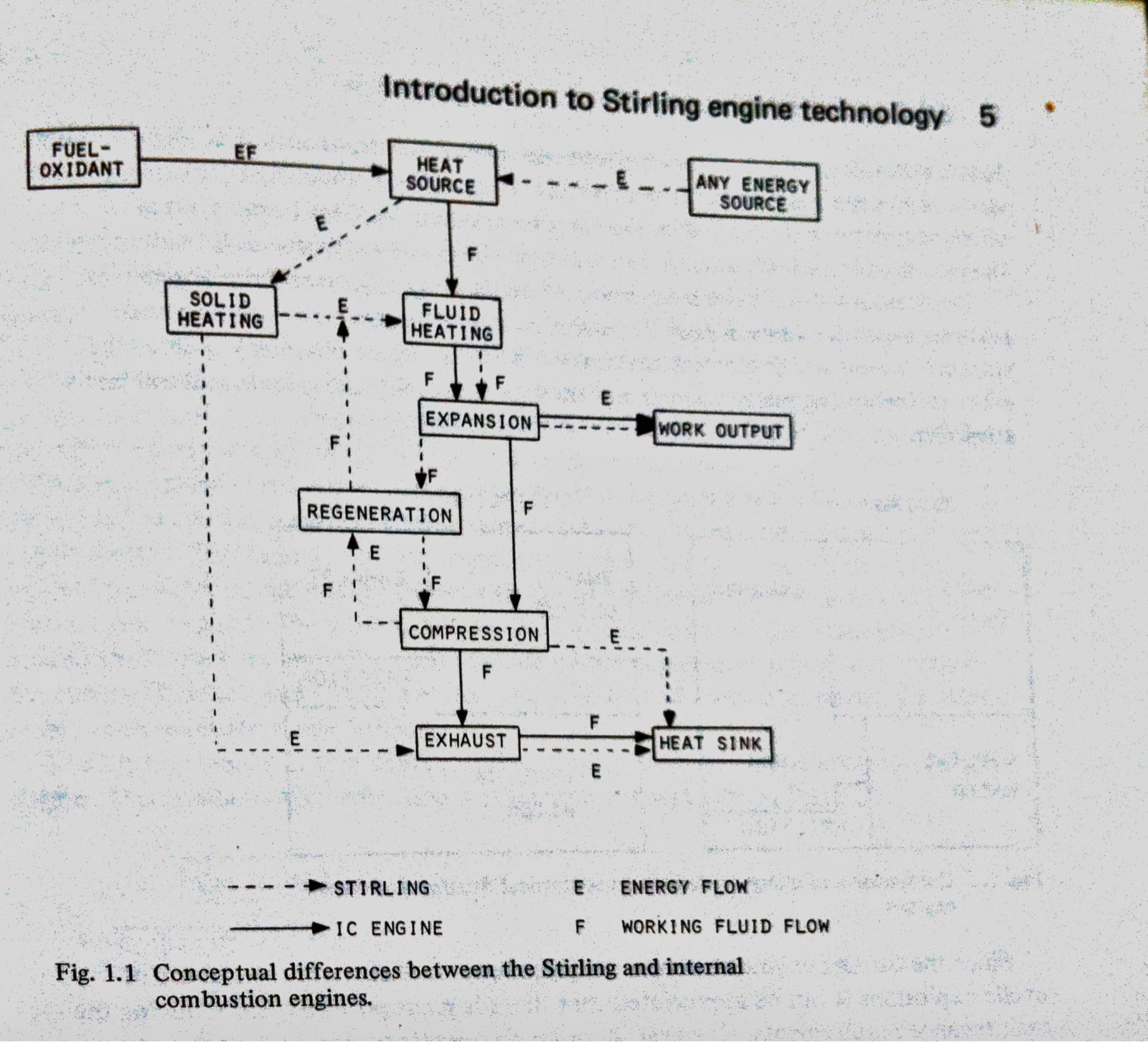To conclude my research, I looked at the Alpha-type Stirling
Engine. This engine contains the same elements as the Beta-type Stirling Engine
(the Engine I looked more in depth with), but has adjustments to its layout
which results in a more efficient Engine.
The most obvious change from the Beta Engine, is the shape
of the Alpha Engine. This engine has 2 working pistons that are at a 90° angle to each
other. Each piston is only exposed to a single heat source and converts thermal
energy into mechanical energy. There are a number of advantages to this setup.
First, by having both pistons do work at alternating intervals energy is almost
always being converted into mechanical energy. The configuration also allows
for the removal of the displacer as each piston acts as both a displacer and
working piston. Finally, by having each piston only exposed to a single heat
source greater differences in temperature can be achieved. This is because the heat
sources will not interact with one another. As discussed in an earlier post, a
greater difference in temperature results in a more efficient engine.
 The Alpha Stirling Engine goes through the same 4 phases as
the Beta Stirling Engine. First, the gas is heated, increasing the pressure
against the piston until the piston pushes outwards. The gas continues to
increase in temperature and pressure. This results in the pressurized gas
moving the second piston, converting more thermal energy into mechanical
energy. As the second piston pushes outwards, the drive on the engine pushes
the first piston back to its resting position. This displaces the gas out of
the hot cylinder and into the cold cylinder. The gas is then cooled. The
flywheel then does work on the second piston to push the gas out of the cold cylinder.
The cooled gas then flows out of the cool cylinder returning to the hot
cylinder. The gas is reheated and the cycle repeats.
The Alpha Stirling Engine goes through the same 4 phases as
the Beta Stirling Engine. First, the gas is heated, increasing the pressure
against the piston until the piston pushes outwards. The gas continues to
increase in temperature and pressure. This results in the pressurized gas
moving the second piston, converting more thermal energy into mechanical
energy. As the second piston pushes outwards, the drive on the engine pushes
the first piston back to its resting position. This displaces the gas out of
the hot cylinder and into the cold cylinder. The gas is then cooled. The
flywheel then does work on the second piston to push the gas out of the cold cylinder.
The cooled gas then flows out of the cool cylinder returning to the hot
cylinder. The gas is reheated and the cycle repeats.
There a three major advantages to this configuration of the
Stirling Engine. They all relate to the efficiency of the engine. First this
configuration allows for an effective regenerator to be easily incorporated
into the engine. While a regenerator is difficult to add to a Beta Stirling
Engine, the regenerator on an Alpha Stirling Engine is easy to add. Since the
Alpha Stirling Engine has separate cylinders for the heat sources, the heat
exchangers can be more optimized. Shown in the animation, the cold source has “wings”
added to it which increases the surface area, and as a result allows for the
gas to be cooled quicker. Finally, each moving part in the engine converts
thermal energy into mechanical energy during the cycle. Unlike the Beta Engine,
the displacers are used to both convert energy and to displace the gas. In the
Beta Engine the displacer does not do work on the system which means it lowers
the efficiency of the engine. In the Alpha Engine, the pistons are both
displacers and pistons, which results in less ineffective motion takes place.
This section of my
ISU was fairly difficult to understand. There are a number of reasons why I
felt this section was more difficult. First, since the engine is more complex
it is logically going to be harder to understand. More importantly, because I
do not have this type of engine at home it was difficult to visualize the
motion of the pistons and what was causing the motion. The animation on
Animated Engines.com made it easier to understand what was happening and why.
Furthermore, my textbook used more advanced terminology when describing this
engine which made it harder to understand the concepts the textbook was trying
to communicate. That said, after some thinking, and watching the animation the
engine became not unlike the engine I already understood. By connecting the
motion of the different parts to the previous engine I was able to better
understand how the engine worked.
Sources:
Hooper, C & Reader, T. G. (1983). STIRLING ENGINES. New York, NY: E.
& F. N. Spon.
Animated Engines. (n.d.). Two Cylinder Stirling
Engine. Retrieved June 5, 2014 from “Animated Engines”:www.animatedengines.com











